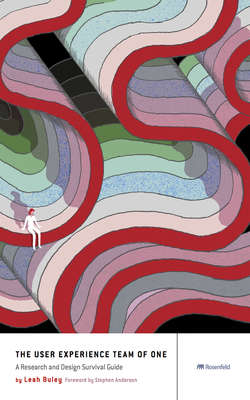Читать книгу The User Experience Team of One - Leah Buley - Страница 15
An Example
ОглавлениеPersonally, I think it’s easier to understand UX when you think about what it’s like to actually use a product. For example, right now I’m sitting in front of my computer, hopping around within the operating system and keying from my word processing program to my email program to my music program. My perception of each of those programs is impacted by how it looks, how it functions, and how well it serves its purpose in the personal need that it satisfies. (Helping me write a book; managing my personal and professional communications; and listening to some tunes that keep me tapping my feet as I work, respectively). In any of these programs, a thousand little decisions were made by someone—or more probably, many “someones”—to create what I experience as the flowing, seamless experience of working (see Figure 1.3).
And that’s just the software. My user experience is also impacted by the physical hardware of my computer: How big and bright the screen is, and whether it feels like “enough” to help me effectively use the hodgepodge of programs for which this laptop is intended. The tactile feel of the touchpad as I scroll down long Web pages. The satisfying clickety-clack of fingers tapping their way across the keys. These are all user experiences, too.
And what about the products and services that are connected to my laptop? Recently, I set up an in-home music system that integrates wirelessly with software that I run on my computer and my mobile phone. I can control the volume from an app on my phone and watch the volume level change on my computer while I hear the music get quieter or louder on the speakers in the other room. This is great execution on the part of the music system manufacturer. But it also casts a warm glow back on my laptop and my mobile phone, for being well designed to support such integration. Sometimes, a user’s perception of the product is beyond the control of any one manufacturer. It’s the cumulative effect of many (see Figure 1.4).
FIGURE 1.3 A user’s experience is the cumulative effect of many factors, some that you can control, and some that you can’t.
FIGURE 1.4 In the absence of better alternatives, users will try to hack together their own solutions, as this baseball fan has. But the companies who make the products that we love do a better-than-average job thinking about the complexities of the user experience.
